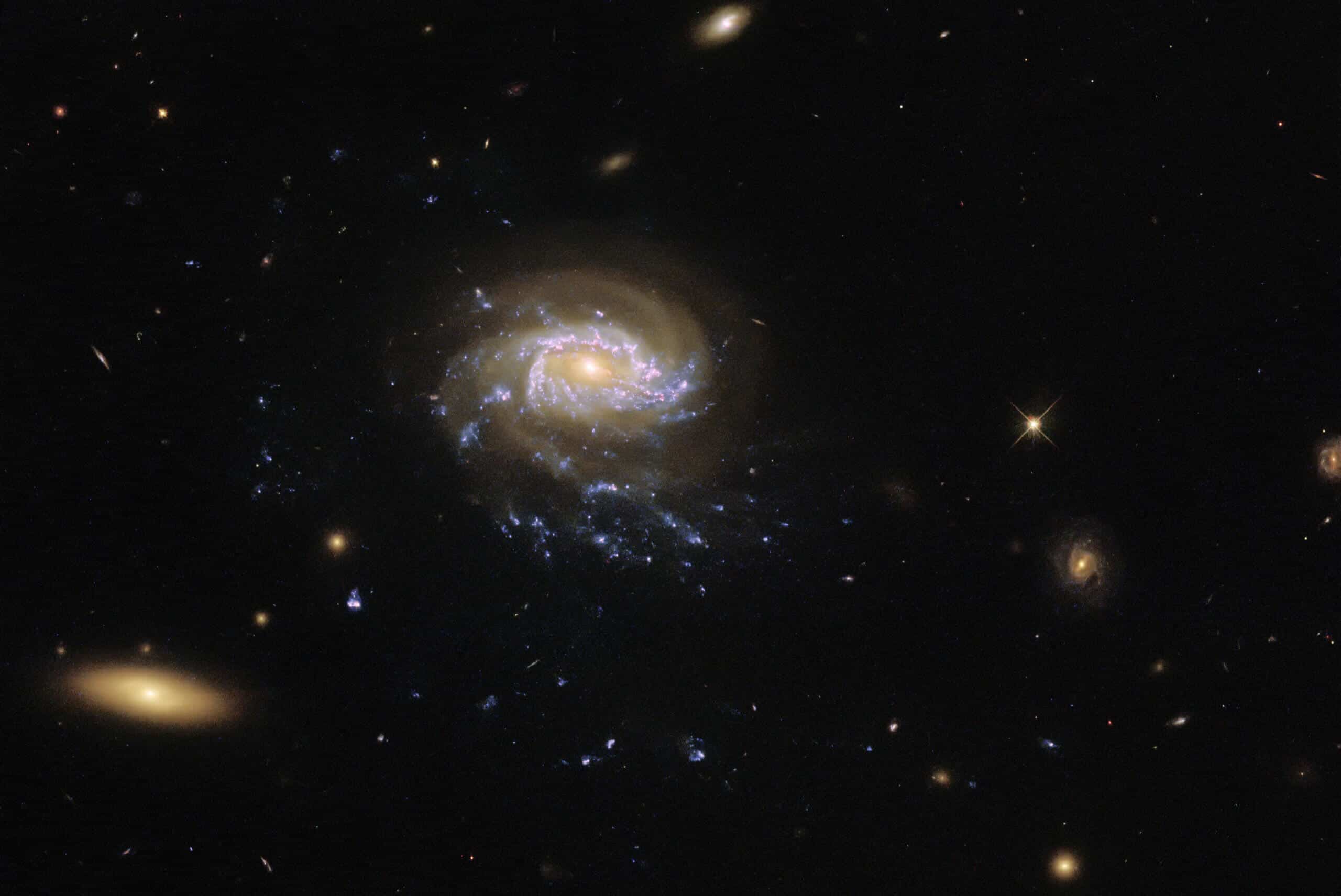A "Medusa Galaxy" with trailing star tentacles hangs in inky darkness in this image taken by the Hubble Space Telescope

A "Medusa Galaxy" with trailing star tentacles hangs in inky darkness in this image taken by NASA's Hubble Space Telescope and the European Space Agency. As Medusa galaxies move through intergalactic space, gas is slowly peeled off, creating tendril-like trails illuminated by clumps of star-forming regions. These blue tendrils are visible below the core of this galaxy, giving it a jellyfish-like appearance. This particular jellyfish galaxy - named JO201 - is in the Leviathan group, named after a sea monster from ancient Greek mythology. The group's sea monster motif adds to the marine motif of this image.
The tendrils of Medusa galaxies extend beyond the bright disk of the galactic core. This particular observation originated from an investigation of the sizes, masses and ages of star-forming clumps in tendrils of Medusa galaxies. Astronomers hope this will help better understand the connection between dynamic air pressure peeling – the process that creates the tendrils of jellyfish galaxies – and star formation.
Hubble's WFC3 (Wide Field Camera 3) captured this galactic seascape. WFC3, a multi-purpose instrument that captures images in UV, AI and visible light wavelengths, is the source of some of Hubble's most spectacular images.
More of the topic in Hayadan:

3 תגובות
A space telescope will never reveal the true picture of the universe, because it is moving.
The true picture of the universe will be revealed to an imaginary viewer who is completely at rest.
The real picture of the universe is perceived only in the imagination, and it appears in Asbar's book
https://nivbook.co.il/product/%D7%9E%D7%A1%D7%A2-%D7%94%D7%A7%D7%A1%D7%9D-%D7%A9%D7%9C-%D7%A2%D7%A6%D7%91%D7%A8-%D7%A2%D7%9C-%D7%9B%D7%A0%D7%A4%D7%99-%D7%94%D7%99%D7%93%D7%99%D7%A2%D7%94-%D7%94%D7%98%D7%91%D7%A2%D7%99%D7%AA/
aetzbar
You are as welcome here as hemorrhoids…..
The age of revolutions based on natural knowledge has arrived.
It is about a linguistic revolution that discovered the secret of human language.
And it is also about a geometric revolution that discovered a new geometry.
And it is also about a physical revolution that discovered a new physics, a new universe.
Idan Zev appeared following "Esbar's magical journey, on the wings of natural knowledge"
https://nivbook.co.il/product/%D7%9E%D7%A1%D7%A2-%D7%94%D7%A7%D7%A1%D7%9D-%D7%A9%D7%9C-%D7%A2%D7%A6%D7%91%D7%A8-%D7%A2%D7%9C-%D7%9B%D7%A0%D7%A4%D7%99-%D7%94%D7%99%D7%93%D7%99%D7%A2%D7%94-%D7%94%D7%98%D7%91%D7%A2%D7%99%D7%AA/